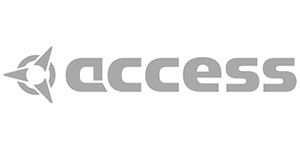
Access Music GmbH is a popular German synthesizer manufacturer. It was founded in 1996 by Christoph Kemper and Guido Kirsch. While being a Ruhr University Bochum student Kemper started developing his own synthesizer. Those were the attempts to create the first virtual analog instrument based on microprocessor. Together with Kirsch they began to sell their own designs.
The early products of the company were the programming devices for synthesizers made by other popular brands including Oberheim. Digital synthesizers of the company were also used as hardware instruments for various devices and DSP (Digital Signal Processor) platforms. Access instruments allowed constant and free software update which gave users the latest fixes and modifications for the instrument – that was the distinctive feature of the brand’s production.
Virus series went on market in 1997 and became the most popular product of the company. The widescale Virus series included many versions: Virus A, Virus B, Virus C, Virus Classic, Virus Indigo, Virus Indigo 2, Virus KB, Virus KC, Virus Rack XL, Virus Ti Desktop, Virus Ti Keyboard, Virus Ti Polar. The series also included two specially developed software units: TDM plugin for Pro Tools and VST Virus PowerCore.
The story took its roots in Virus A synthesizers. Their possibilities were sidely used in dance music, trance, techno in the late 1990s. Physical modeling is responsible for digital recreation of real sounds with a true German approach – they seem perfect. Virus generates believable subwoofer thick noise and overdriven leads in TB-303 style. The module has a 12-note polyphony and 16-part multitimbrality. Besides two oscillators, filters and LFO there are an ADSTR and such effects as chorus, flange, delay and vocoder. All parameters are MIDI controlled.
Virus series is unique due to the fact that unlike other competitors on the music market Access didn’t try to clone already existing electronic musical instrument systems – the company decided to grow independently, in a self-sufficient manner.
Further series models – Virus B model and a 61-note Virus KB synthesizer Access company released an upgraded operating system version. The polyphony of the instruments was doubled, there were 3 oscillators per each of 24 voices. The new OS had an impact on a 32-band vocoder functions as well, added up to 82 simultaneous effects, 6-level stereo phaser, ring modulator, a few distortion types, 5 frequency modulation modes, boost analog algorithm and envelope tracking.
OS 4.0 version (2000) brought many new functions, there appeared an enhanced reverb, groove delay, surround sound, Direct FX (turning Virus into effect processor not eating up the polyphony), 16 arpeggiators with many patterns and enabling parameter change in real time, distortion module with lo-fi and DSP effects.
Virus Rack was launched in 2001 and became a more affordable version sacrificing polyphony and one oscillator (so there are 2 of them + sub). Later Virus B was replaced by new models: Virus C, Virus KC and Virus Rack XL.
Virus C as well as the other versions was based on Motorola. Together with an increased polyphony (32 voices) the instrument introduced the new feature of cancel and repeat possibilities and got a 3-band equalizer.
A 37-note Indigo model appeared on the shelves in 2000 combining the specs of Roland, Moog, ARL and, of course, Virus B based on OS 4.0. In 2002 it was replaced with Indigo 2.
TI series became a Virus (A/B/C) story resolution becoming even more popular. Its most important distinction from the previous versions was wavetable sound synthesis. Besides, the instrument numbers 3 oscillators with sync ability, 3 LFOs, Mod Matrix, frequency modulation, sub oscillator and noise generator. Filter modes include Lowpass, Hipass, Bandpass, Bandreject and DSP emulation of the analog ones (12/24dB – a so called Minimoog emulation). The essence and the core of the TI series is in its gloomy and grim filters which became the pure classics nicely outstanding among bright and crisp Clavia and Korg. TI also makes us happy providing users with a well thought computer integration.
TI series included a 61-note version of Virus TI Keyboard and a 37-note Virus TI Polar, sound module Virus TI Desktop and Virus TI Snow (2008) with an updated operating system. The new series which replaced TI – TI2 – came out in 2009. It featured a quicker DSP, such effects as tape delay, frequency shifter, a number of new distortion types and a character control.
TI model is considered to be the best Virus series model which in its turn is an example of an undeniably great digital instrument. The fact that Virus was a cult synth in the 1990s is proven by such names as: The Prodigy, Linkin Park, Depeche Mode, Dr. Dre, No Doubt, Radiohead.










